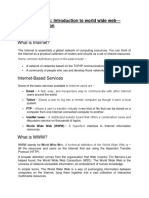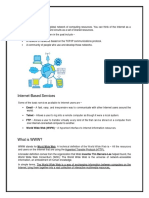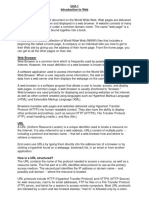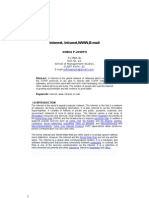0% found this document useful (0 votes)
32 views2 pagesInternet Terms
The document provides definitions and explanations of key internet terms, including the Internet, World Wide Web, web hosting, domain names, and IP addresses. It distinguishes between web clients and servers, describes the function of web browsers, and outlines protocols like HTTP and FTP. Additionally, it covers concepts such as bandwidth, Internet Service Providers (ISPs), and the role of a webmaster.
Uploaded by
nimoshahzadi123Copyright
© © All Rights Reserved
We take content rights seriously. If you suspect this is your content, claim it here.
Available Formats
Download as PDF, TXT or read online on Scribd
0% found this document useful (0 votes)
32 views2 pagesInternet Terms
The document provides definitions and explanations of key internet terms, including the Internet, World Wide Web, web hosting, domain names, and IP addresses. It distinguishes between web clients and servers, describes the function of web browsers, and outlines protocols like HTTP and FTP. Additionally, it covers concepts such as bandwidth, Internet Service Providers (ISPs), and the role of a webmaster.
Uploaded by
nimoshahzadi123Copyright
© © All Rights Reserved
We take content rights seriously. If you suspect this is your content, claim it here.
Available Formats
Download as PDF, TXT or read online on Scribd
/ 2






















































































